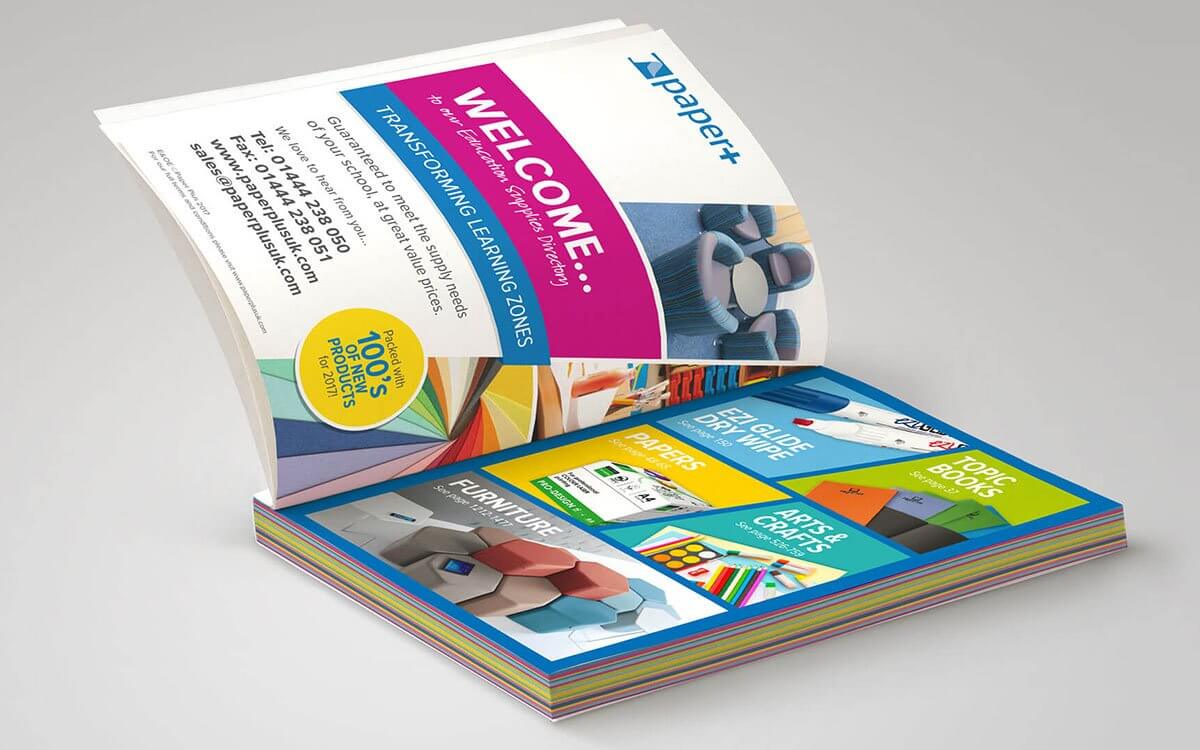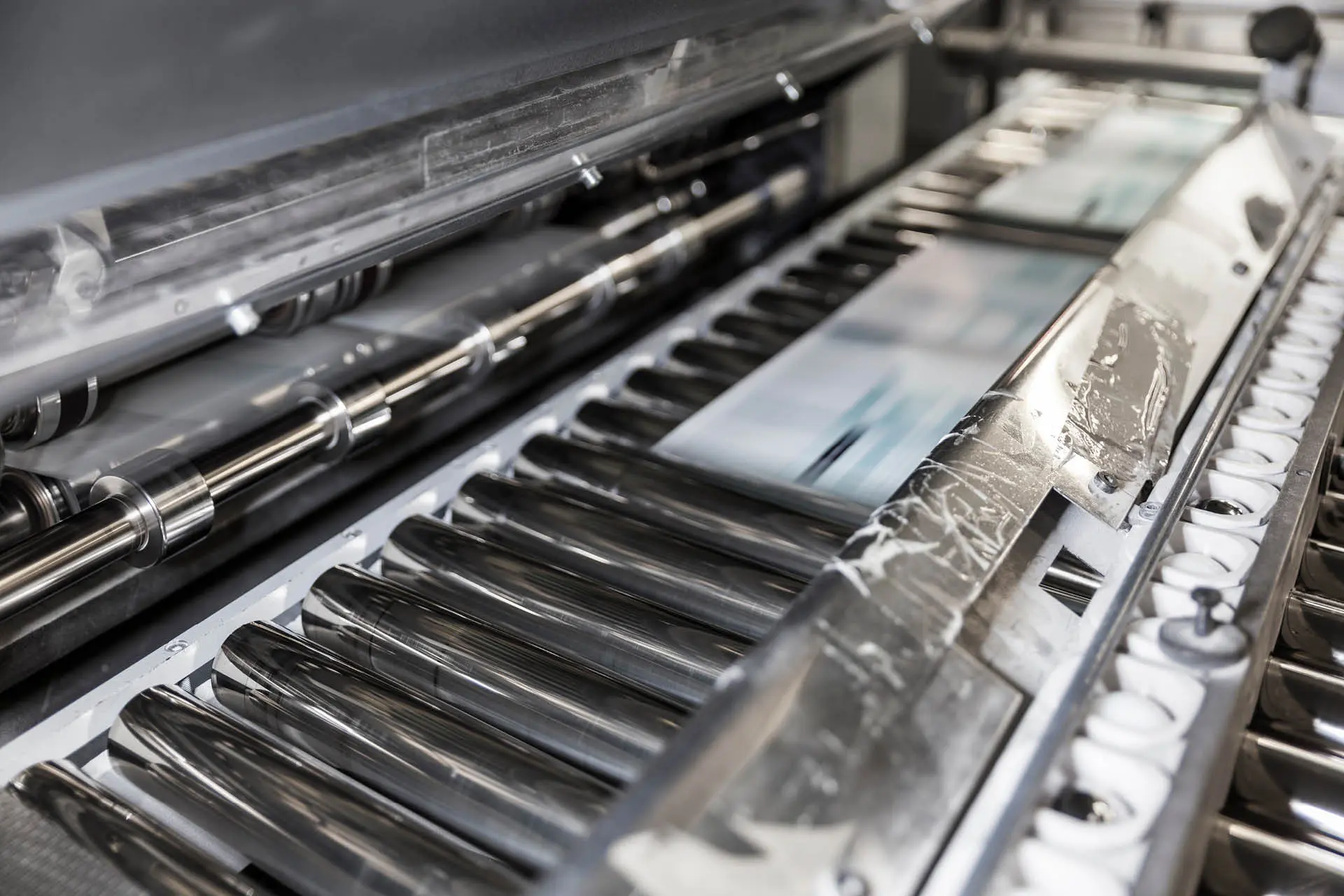What You Need to Know Before Choosing litho printing Services
Wiki Article
The Important Guide to Recognizing Litho Printing and Its Applications
Litho printing stands as a substantial method in the printing sector, rooted in the principles of oil and water repulsion. This method not just provides high-quality pictures yet additionally deals with numerous commercial requirements. Its applications range from advertising products to packaging, showcasing its convenience. As the industry adapts to brand-new technologies, the evolution of litho printing raises inquiries concerning its future and significance in a digital landscape. What exists ahead for this sustaining technique?
What Is Litho Printing?
Litho printing, a commonly made use of printing technique, depends on the principle of oil and water repulsion. This technique uses a level printing surface area, generally a steel plate, which is dealt with to guarantee that the photo locations are receptive to oil-based inks while the non-image locations repel them. The procedure begins with the development of a picture on the plate, frequently through drawing or photo means. Once the image is prepared, the plate is dampened with water, followed by the application of ink. The ink adheres just to the picture areas, permitting specific reproduction of graphics and text. Litho printing is preferred for its ability to generate high-grade prints with great information and vibrant shades. It is commonly used in business applications, consisting of newspapers, magazines, and packaging, showcasing its flexibility and performance in meeting the needs of modern-day printing.The History of Lithography
Although lithography is a modern printing staple, its origins trace back to the late 18th century when German dramatist Alois Senefelder designed the technique in 1796. Originally developed as a method for duplicating messages and photos, lithography made use of a level stone surface to produce prints with a chemical process. Senefelder's innovation permitted for greater versatility and imaginative expression contrasted to previous printing methods.By the 19th century, lithography obtained extensive approval, ending up being a popular selection among artists and authors. It allowed the mass manufacturing of images, maps, and posters, especially impacting the printing industry. The method even more evolved with the introduction of lithographic presses, enhancing performance and quality.As the industrial revolution progressed, lithography adjusted to fulfill the needs of commercial printing, leading the way for contemporary applications. Today, it stays a vital strategy in various sectors, including posting, packaging, and art recreation.Just How Litho Printing Works
A key function of litho printing is its dependence on the principle of oil and water repulsion - litho printing. In this process, pictures are transferred from a level surface, usually a steel or polymer plate, to paper. Home plate is treated to ensure that the areas intended for printing draw in ink, while the non-image locations repel it as a result of their fondness for water. The printing begins by wetting the plate with water, which sticks to the non-image locations. Subsequently, an oil-based ink is used, sticking only to the designated image areas.When the plate enters into call with the substratum, the ink is moved, creating a print. The litho printing process can producing top quality images with great information. It is commonly utilized for mass production as a result of its performance and consistency, making it a favored approach for industrial printing applicationsAdvantages of Litho Printing
One notable benefit of litho printing is its ability to generate top notch images constantly, making it a suitable option for commercial projects. This printing approach uses a flat printing plate, making certain also ink circulation and sharp information. Litho printing is additionally renowned for its color precision, enabling dynamic and true-to-life reproductions, which is vital for branding materials.Moreover, it supports a vast range of substrates, including paper, cardboard, and also certain plastics, boosting its flexibility. The procedure is affordable for big runs, as economic climates of scale decrease per-unit prices. Furthermore, litho printing has a quick turnaround time, permitting effective manufacturing schedules.Its toughness also suggests that published products withstand fading, ensuring that the final product maintains its aesthetic charm in time. On the whole, these advantages make litho printing a favored selection throughout different industries, adding to its enduring appeal.
Applications of Litho Printing in Company
As services significantly look for trusted and high-grade printing options, litho printing emerges as a key gamer in numerous applications. This strategy is particularly preferred for producing marketing materials such as sales brochures, leaflets, and catalogs, thanks to its capability to supply lively shades and sharp images. Additionally, litho printing is often employed for packaging services, enabling business web link to develop captivating labels and boxes that improve item appeal.In the field of business identification, litho printing is critical in creating specialist stationery, calling card, and promotional product, which assist strengthen brand name acknowledgment. Furthermore, it is extensively used in the posting market for published materials such as books and publications, where constant quality is paramount. In general, litho printing's flexibility and effectiveness make it a crucial device for businesses aiming to connect successfully and establish a strong market presence.Artistic Utilizes of Litho Printing
Litho printing works as a versatile tool in the domain name of printmaking, offering artists an one-of-a-kind technique to share their imagination. This strategy enables for a wide variety of artistic applications, from traditional prints to contemporary interpretations. By checking out the redirected here nuances of litho printing, artists can harness its unique top qualities to enhance their work.
Printmaking Methods Overview
The creativity of printmaking encompasses a diverse variety of strategies, with litho printing sticking out for its one-of-a-kind strategy to picture creation. This technique relies upon the principle of oil and water repulsion, permitting artists to draw directly onto a limestone or steel plate with a greasy medium. As soon as prepared, home plate is dampened and inked, transferring the picture onto paper through pressure. Litho printing is commemorated for its capability to produce fine details and abundant tonal variations, making it a popular choice amongst musicians. In addition, the process is flexible, accommodating both standard strategies and modern adaptations. This flexibility permits litho printing to bridge various imaginative designs, enhancing the printmaking landscape with its distinct features and capacities.Special Artistic Applications
Exploring the distinct imaginative applications of litho printing reveals its exceptional convenience in different imaginative areas. Artists make use of litho printing to create intricate designs and textures, enabling meaningful and thorough jobs. The process assists in the reproduction of brilliant colors, making it perfect for illustrations and fine art prints. Numerous contemporary musicians embrace lithography for its capability to integrate traditional strategies with modern-day principles, leading to cutting-edge artwork. Furthermore, litho printing is frequently utilized in the manufacturing of minimal edition prints, boosting their value and allure. The responsive quality of litho prints includes a distinctive dimension, bring in collection agencies and art lovers alike. In general, litho printing remains a considerable tool for artistic expression, connecting classic methods with contemporary creativity.The Future of Litho Printing in a Digital Globe
As the printing market advances, litho printing encounters the challenge of incorporating digital modern technologies to continue to be relevant. Approaches concentrated on digital integration, together with patterns in sustainability and development, will certainly shape its future - litho printing. Understanding these dynamics is important for market stakeholders aiming to adjust to a rapidly transforming landscapeDigital Combination Strategies
A growing variety of litho printing companies are embracing electronic integration techniques to stay competitive in a significantly electronic landscape. By integrating digital workflows, these business can simplify processes and improve performance. This integration allows for real-time information management and enhanced communication in between departments, reducing turnaround times substantially. Additionally, digital devices allow much better modification and customization of published materials, accommodating certain customer needs. Companies are likewise adopting hybrid printing services that integrate traditional litho methods with electronic technologies, offering adaptability in production. In addition, leveraging information analytics aids in recognizing market trends and client preferences, permitting services to make educated decisions. Overall, electronic integration is becoming vital for litho printing firms intending to innovate and respond to progressing market requirements.Sustainability and Technology Patterns

Regularly Asked Questions
What Materials Are Frequently Utilized in Litho Printing?
The materials generally utilized in litho printing include aluminum plates, ink, water, and paper. Each element plays an important function in the printing process, ensuring high-grade image recreation and reliable transfer of ink Your Domain Name onto the substrate.Just How Does Litho Printing Contrast to Digital Printing?
Litho printing uses remarkable shade consistency and high quality for huge runs, while electronic printing masters brief runs and customization. Each technique has unique advantages, satisfying different requirements based upon manufacturing range and cost-efficiency.What Is the Regular Turn-around Time for Litho Printing Projects?
The common turnaround time for litho printing tasks differs, normally ranging from a couple of days to a number of weeks. Aspects affecting this duration consist of job complexity, amount, and required completing processes, affecting overall production schedules.Can Litho Printing Accommodate Custom-made Sizes and Formats?
Litho printing can without a doubt accommodate custom-made sizes and styles, permitting adaptability in style. This flexibility allows customers to attain distinct print outcomes tailored to their particular demands, enhancing the total effectiveness of their jobs.What Are the Ecological Influences of Litho Printing?
The environmental influences of litho printing consist of resource consumption, chemical use, and waste generation. Nevertheless, advancements in sustainable practices and environment-friendly products are progressively lowering these adverse results, advertising an extra ecologically liable strategy to printing.Report this wiki page